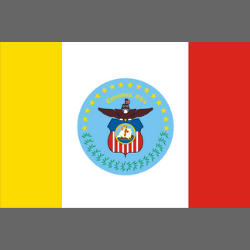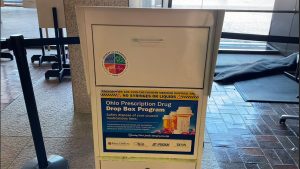Rescuers and scrap metal scavengers dug into the floors of a collapsed hotel Monday in this quake-ravaged coastal town, where 15 bodies had already been extracted. Jean Moise Fortunè, whose brother, the hotel owner, was killed in the quake, believed there were more people trapped in the rubble.
But based on the size of voids that workers cautiously peered into, perhaps a foot in depth, finding survivors appeared unlikely.
The quake, centered about 80 miles west of the capital of Port-au-Prince, killed more than 1,400 people as it nearly razed some towns and triggered landslides that hampered rescue efforts in a country that is the poorest in the Western Hemisphere. Haiti already was struggling with the coronavirus pandemic, gang violence, worsening poverty and the political uncertainty following the July 7 assassination of President Jovenel Moïse.
And the devastation could soon worsen with the coming of Tropical Depression Grace, which was predicted to reach Haiti on Monday night. The country’s Civil Protection Agency said strong winds, heavy rain, rough seas, mudslides and flash flooding were expected. Rainfall amounts could reach 15 inches in some areas.
While residents of Les Cayes carted away twisted heaps of scrap metal to earn some money, families who lost their homes camped out in soccer field, using sheets and sticks to erect a bit of shade, and gathering to receive food distributed from a truck.
Injured earthquake victims continued to stream into Les Cayes’ overwhelmed general hospital, three days after the earthquake struck Saturday. Patients waited to be treated on stair steps, in corridors and the hospital’s open veranda.
“After two days, they are almost always generally infected,” said Dr. Paurus Michelete, who had treated 250 patients and was one of only three doctors on call when the quake hit. “That makes it hard on us.”
The magnitude 7.2 earthquake left at least 6,000 people injured, with thousands more displaced from destroyed or damaged homes. Les Cayes was darkened by intermittent blackouts, and many people slept outside, clutching transistor radios tuned to news, terrified of the continuing aftershocks.
Efforts to treat the injured were difficult at the hospital, where Michelete said pain killers, analgesics and steel pins to mend fractures were running out amid the crush of patients.
“We are saturated, and people keep coming in,” he said.
Josil Eliophane, 84, crouched on the steps of the hospital, clutching an X-ray showing his shattered arm bone and pleading for pain medication.
Michelete said he would give one of his few remaining shots to Eliophane, who was injured when he ran out of his house as the quake hit, only to have a wall fall on him.
Nearby, on the hospital’s open-air veranda, patients were on beds and mattresses, hooked up to IV bags of saline fluid. Others lay on the garden just beyond, under bed sheets erected to shield them from the brutal sun. None of the patients or relatives caring for them wore face masks amid a coronavirus surge, and all could be drenched by the impending rain.
Officials said more than 7,000 homes were destroyed and nearly 5,000 damaged from the quake, leaving some 30,000 families homeless. Hospitals, schools, offices and churches also were destroyed or badly damaged.
Underlining the dire conditions, local officials had to negotiate with gangs in the seaside district of Martissant to allow two humanitarian convoys a day to pass through the area, the U.N. Office for the Coordination of Humanitarian Affairs reported. The agency called Haiti’s southern peninsula a “hot spot for gang-related violence,” where humanitarian workers have been repeatedly attacked.
The agency said the area has been “virtually unreachable” over the past two months because of road blocks and security concerns. Agency spokeswoman Anna Jefferys said the first convoy passed through Sunday with government and U.N. personnel. She added that the U.N.’s World Food Program plans to send in food supplies via trucks Tuesday.
Prime Minister Ariel Henry declared a one-month state of emergency for the whole country and said that first government aid convoys had started moving help to areas where towns were destroyed and hospitals were overwhelmed.
UNICEF Executive Director Henrietta Fore said humanitarian needs were acute, with many Haitians urgently needing health care, clean water and shelter. Children separated from their parents also needed protection, she said.
Referring to the 2010 earthquake that ravaged Haiti’s capital, killing tens of thousands, Fore said: “Little more than a decade on, Haiti is reeling once again. And this disaster coincides with political instability, rising gang violence, alarmingly high rates of malnutrition among children, and the COVID-19 pandemic — for which Haiti has received just 500,000 vaccine doses, despite requiring far more.”
The country of 11 million people received its first batch of U.S.-donated coronavirus vaccines only last month via a United Nations program for low-income countries.
Medical workers from across the region were scrambling to help as hospitals in Les Cayes started running out of space to perform surgeries.
“Basically, they need everything,” said Dr. Inobert Pierre, a pediatrician with the nonprofit Health Equity International, which oversees St. Boniface Hospital, about two hours from Les Cayes.
Pierre’s medical team was taking some patients to St. Boniface to undergo surgery, but with just two ambulances, they could transport only four at a time.
Small planes from a private firm and the Florida-based missionary service Agape Flights landed at the Port-Au-Prince airport Sunday carrying about a half-dozen injured from the Les Cayes area. Young men with bandages and a woman were hoisted on stretchers to waiting Haitian Red Cross ambulances.
Working with USAID, the U.S. Coast Guard said a helicopter was transporting medical personnel from the Haitian capital to the quake zone and evacuating injured back to Port-au-Prince. Lt. Commander Jason Nieman, a spokesman, said other aircraft and ships were being sent.
At the Les Cayes hospital, Emma Cadet, 41, a carpenter’s wife, hovered over her 18-year-old son, Charles Owen, as he awaited an operation on his broken arm. He was among the lucky patients to have received pain medication.
Worse off was Nerison Vendredi, 19, lying next to Owen, quiet but alert. No casts or splint would help Vendredi because she apparently had suffered internal injuries and could not move.




